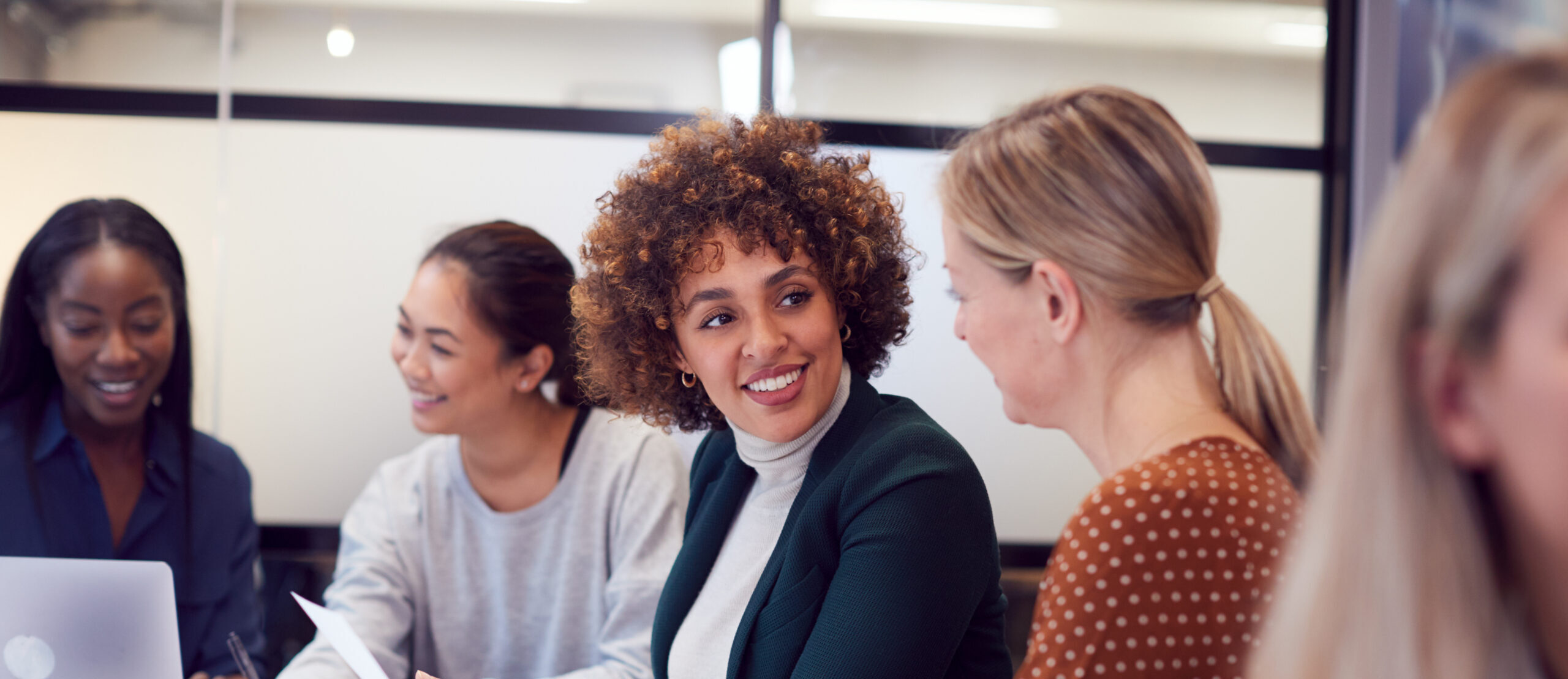When leaders of all genders, at all career stages, get serious about making workplaces work for women, then all of us win.
Continue readingWhen change works and why
In this article, Trish Maluta shares a recent example of the success she had with a major culture change project for the Tasmanian Public Trustee.
Continue readingLeading culture improvement initiatives
What makes a great place to work?
Over his 15 year career in HR and learning and development working in global organisations, Michal Pawlowicz has experienced the breadth and depth of business cultures. Equipped with a master’s degree in psychology and postgraduate HR and competency management studies, he specialises in creating high-performing L&D teams known for their strong culture.
After relocating from Poland to New Zealand in 2018, Michal’s interest and experience in driving culture change accelerated. He shares his insights on culture, how to drive change and the common traits of great places to work.
Culture is by design, not by default
At the heart of Michal’s work in culture is a core belief that culture is by design, not by default. Culture doesn’t just happen. It’s the result of sustained effort and commitment at all levels of the organisation.
“It’s difficult to build a good culture but very easy to destroy it,” he explains. “We build culture every day with even the smallest things, especially as leaders. Everything we do is a building block of the culture.”
The difference between a default culture and culture by design is vast. A default culture is often unremarkable without any exceptional defining traits. A culture by design, says Michal, can be amazing.
From the work he has done, Michal says that purposeful and meaningful work to design your team culture can lead to enhanced collaboration, communication and trust.
“People will be more creative because they aren’t afraid to put forward their ideas,” he adds. “It can change the entire team dynamic.”
A bottom up approach
When Michal first came to New Zealand, he started working at the Auckland Council. Here, he and his team ran a total of 25 Cultural Elements workshops for the 280 staff who worked in the Council’s Regulatory Services team.
Each workshop was a chance for the teams to design their culture, both the elements they wanted in the culture and the elements they didn’t want. Importantly, they took a bottom up approach rather than a top down approach to drive this initiative.
“Every team is different and every team has a unique culture,” he explains. “Using the rides&elephants Emotional Culture Deck, we started asking people what they personally want to see in their team culture. It was crucial that we first understand what matters to them as individuals. We wanted to understand what they wanted to see and experience when they came to work, and what they wanted to avoid.”
From there, the workshops shifted to the team level, combining the personal insights into a purpose-built, Culture Canvas focused on behaviours and actions.
In the process of coming together as a team, Michal said that 70-80% of the time, people ultimately wanted the same thing. However, they also discovered that the same word can mean different things for different people. Or that people can use different words to describe the same thing. That’s why it was so important that the Culture Canvas was more than just words or values on a wall.
“When we came up with the Culture Canvas, we looked at how people wanted to feel and then developed actions to make that happen,” he recalls. “People took ownership because they were their ideas. Nobody told them what to do and what not to do. This has real power in creating culture.”
The pillars of a great culture
While every culture is different, Michal agrees that there are some common threads that run between the best cultures. Similarly, there are elements of workplaces that can lead to cultures that are not-so-great.
On the positive side, great cultures feature:
- A drive for high performance where individuals work together to achieve goals and continuously improve.
- Professionalism is balanced with a fun environment where team members can enjoy banter in a respectful way.
- Respect for all nationalities, ethnicities, differences and opinions.
- Trust and psychological safety so people feel comfortable to share their ideas and opinions without fear of judgement or retribution.
- Authenticity across the entire team but especially so for leaders.
- Recognition that employees are humans with their own feelings, thoughts, emotions and experiences that they bring to work every day.
On the flip side, Michal says that unpredictability, lack of transparency, lack of trust and gossipping are all the enemies of great culture. In his experience, dealing with toxic individuals who damage the team culture can also go a long way to creating a better place to work.
“You might have eight people in your team with one standout superstar who always delivers results,” he shares. “But if that person is toxic and damaging the culture, this can hinder the results the other seven people are capable of achieving. If you have a conversation with that one toxic person, or remove them from the team, you might suddenly find you now have seven superstars in the team.
“I encourage managers to build the confidence and capability to have these conversations. This courage is what is needed to actively shape culture.”
Start with one simple thing
Over the years, Michal has seen many leaders put culture in the too hard basket. They know it’s important. They know they need to put resources towards it. But they don’t know where to start.
Michal encourages managers to do one simple thing. That is, to commit to having an honest conversation that is the springboard for change.
Culture is a shared responsibility where leaders must step back and listen to what people want and learn how they as managers can contribute.
“Your role as a leader is to empower people to be part of the process of designing culture,” he explains. “Have honest conversations with your team and ask them about the values, behaviours and feelings that they want to experience at work. From there, work out how you can create those moments and experiences for your team. If you don’t feel that you have the capability to have these conversations, I would encourage you to bring in external help to support this process.
“The key to culture is to drive it with your team, not for them. Make a commitment and stick with it, together.”
What’s in store for 2024?
Take a look at our summary of the five main trending topics that will shape management and leadership in 2024.
Continue readingFive ways leaders can set themselves up for success in 2024
For a successful 2024, consider the needs of all of your stakeholders in the system.
Continue readingHow to empower and enable your team this year
Empowering and enabling your people sounds so obvious. Yet it is often overlooked. Read how to achieve it successfully this year.
Continue readingMember Spotlight with Brendan Blomeley FIML
Get to know your new IML Board Director, Brendan Blomeley FIML, Mayor of Clarence City Council in Tasmania.
Continue readingWellbeing tips for the holiday season
Ready for a break? So are we!
The Institute has had another busy and successful year, but we know all too well the importance of rest and recuperation for managers and leaders. Wellbeing has been a huge focus for our Members who frequently join our Member Professional Support Network meetings this year. So, we asked some Members what they will be doing to recharge over the holiday period.
Sarah Hunter FIML (Principal of Aurora Transformations)
I have just done my last bit of business travel and will attend my last board meeting of the year this week, so for Christmas well-being I will be going offline to restore some order in my country garden with the dogs and the chickens. Likely some snakes too, but I try not to think about those.
Favourite Christmas carol or song: The North Wind (Christmas Day).
Favourite Christmas tradition: making Christmas fruitcake and my own fruit mince for Bakewell fruit mince pies.
Holiday reading: I like reading about business strategy over the break because I can really immerse myself in them at this time of year. Also currently reading and highly recommend Let the Land Speak by Jackie French.
Natasha Facci FIML (Director of The Alchemy Collective & BildGroup)
Like most of us, this year has been hectic from a personal and professional standpoint.
It has had its fair share of highs and lows and has provided me further insight into how I can be the best version of me. So, over the two-week break, I’m planning to rest, restore and renew through the lens of ease and joy. I plan to rest and unwind through, sleep ins, listening to music, and meditating in nature. Restoring through connecting with loved ones over nutritious food and walks in nature. And finally, I plan to refresh and renew through reading for fun, clearing away any life clutter and creating an intention and purpose for next year. Wishing you all a wonderful Christmas & New Year, full of joy, good health and happiness.
What is your favourite Christmas carol/song? White Christmas sung by Dean Martin.
What is your favourite Christmas tradition? My mother makes her famous home-made pasta Forno. It’s a dish she makes over a couple of days to allow the flavours to settle. It’s delicious.
Do you have a book recommendation for some holiday reading? All the light we cannot see, by Anthony Doerr.
Marianne Di Giallonardo CMgr MIML (Director of People and Places at Maroondah City Council)
I’ll be taking two weeks break to Mansfield. For me the perfect break is no people, no schedules, no phones/tech and no decisions; a complete break to breath in the fresh air, see the stars at night and enjoy ones loved ones.
Favourite Christmas carol or song: White Christmas.
Favourite Christmas tradition: St Nicholas celebrations on 6 December. I give a small pack of goodies to all Directorate employees, org Managers and senior colleagues, families in the court where I live and my extended family.
Holiday reading: I’m working my way through the I Love Lucy CD Box Set.
Philip Crenigan FIML (Principal of Executive Turning Point Pty Ltd)
For me, Christmas has always been about music and appreciating the simple things. It is a very musical week with three performances of Carols in the House at Sydney Opera House on Friday, Saturday and Sunday, plus several rehearsals this week with orchestra. It’s also a time to check in with clients for the last time of the year, wish them well, thank them and have a complete break which we have planned for in January.
Favourite Christmas carol or song: Oh Holy Night but the final verse of Oh Come all ye faithful with descant sopranos is a close second.
Favourite Christmas tradition: Carols around the piano and that will include the twelve days of Christmas.
Holiday reading: Light over Liskeard by Louis de Bernieres… a wonderful futuristic novel that will make you reconsider what is really precious in our short and precarious lives.
I wish you all a relaxing and peaceful break in this holiday period and look forward to catching up again next year.
Marty Thomas FIML (NSW State Director for The CEO Institute)
For me, Christmas is about spending a lot of time with my family and reflecting on the fortunate life we have in Australia. It’s a time to remember family and friends, past and present and to celebrate the WHY of Christmas. This special time of the year strengthens our bonds, shows love, and spreads kindness to everyone. I can’t think of a better way to recharge my batteries for 2024.
Favourite Christmas tradition: Champagne breakfast with ham and cheese croissants.
Holiday reading: Dare to Lead by Brene Brown.
The inextricable link between mental health and work: perspectives from a frontline leader
CEO of Northern Rivers Community Gateway, Jenni Beetson-Mortimer, shares her frontline insights on the inextricable link between mental health and work.
Continue readingGreater happiness at work
The key to finding happiness at work is to be engaged in meaningful work, something we all know to be intrinsically true…or is it?
Continue reading










